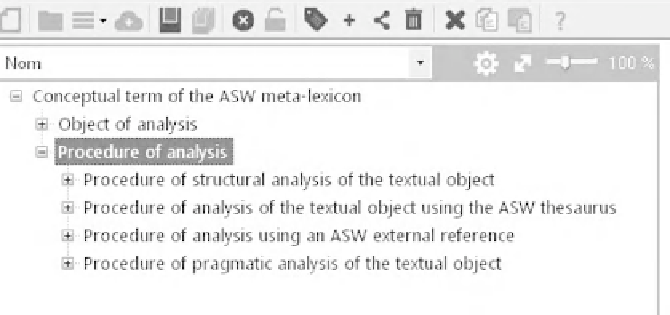Information Technology Reference
In-Depth Information
‒
tools
grouped around the
use of thesauruses
, socio-taxonomies
(“folksonomies”), glossaries, terminologies (be they personal, institutional, etc.) to
identify and classify the textual object;
‒
tools
serving to bring an ASW analysis closer to a
standard
or a norm (such as
the LOMFR, Dublin Core, etc.);
‒
tools
(of critical analysis) enabling us to
comment
on, criticize, improve,
enrich, etc. content.
Alongside the tools for segmenting relevant audiovisual passages, and those for
actually publishing an analyzed and indexed audiovisual corpus, the tools of analysis
we have just cited constitute a rich and diverse arsenal, which we believe facilitates
a satisfactory appropriation of any audiovisual object to make it into a resource
suigeneris
, aimed at a specific audience (see our explanations in Chapter 1).
Figure 14.1 shows the general organization of the meta-lexicon which begins
with the primitive conceptual term [Procedure of analysis]. This meta-lexicon is
divided into four major taxonomical classes of
analyticalprocedures
.
The first class of procedures covers all the activities which allow us to treat the
various aspects of an audiovisual text or corpus. As explained in Chapter 1, we
consider the audiovisual text as being made up of a set of characteristic levels (or
strata) such as that of the referential thematization of a knowledge object, the
syntagmatic development of an object being thematized, the discursive and
audiovisual framing, etc.
Figure14.1.
Thefourclassesofactivitiesinanalyzinganaudiovisualtextorcorpus

